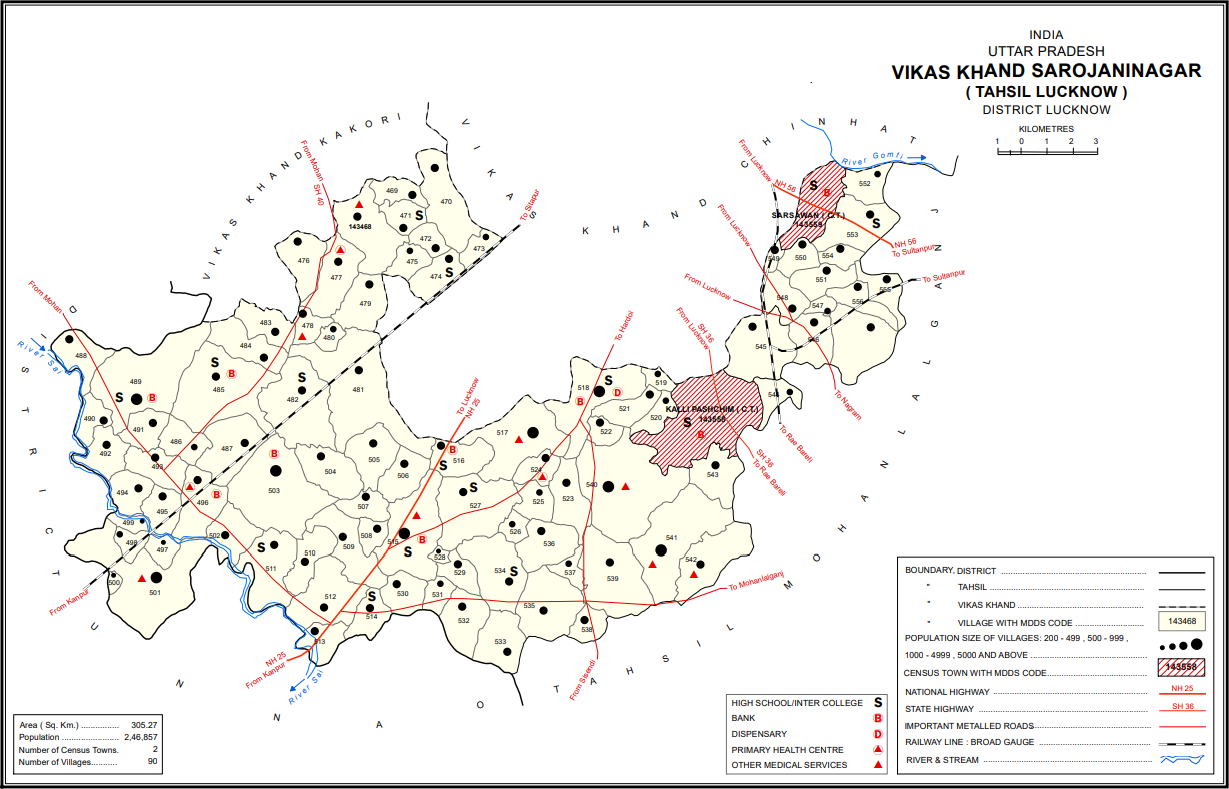Sarojaninagar on:
[Wikipedia]
[Google]
[Amazon]
 Sarojaninagar, also spelled Sarojini Nagar, is a
Sarojaninagar, also spelled Sarojini Nagar, is a
 Sarojaninagar, also spelled Sarojini Nagar, is a
Sarojaninagar, also spelled Sarojini Nagar, is a community development block
In India, a Community development block (CD block) or simply Block is a sub-division of Tehsil, administratively earmarked for planning and development. The area is administered by a Block Development Officer (BDO), supported by several techni ...
in Lucknow district, Uttar Pradesh
Uttar Pradesh (; , 'Northern Province') is a state in northern India. With over 200 million inhabitants, it is the most populated state in India as well as the most populous country subdivision in the world. It was established in 1950 ...
, India
India, officially the Republic of India (Hindi: ), is a country in South Asia. It is the seventh-largest country by area, the second-most populous country, and the most populous democracy in the world. Bounded by the Indian Ocean on the so ...
. It is part of the tehsil
A tehsil (, also known as tahsil, taluka, or taluk) is a local unit of administrative division in some countries of South Asia. It is a subdistrict of the area within a district including the designated populated place that serves as its administ ...
of Lucknow
Lucknow (, ) is the capital and the largest city of the Indian state of Uttar Pradesh and it is also the second largest urban agglomeration in Uttar Pradesh. Lucknow is the administrative headquarters of the eponymous district and division ...
and it includes 90 villages. As of 2011, its population was 224,045, in 40,923 households.
Sarojaninagar is also the name of two wards of Lucknow, together making up 32 mohalla
is an Arabic word variously translated as district, quarter, ward, or "neighborhood" in many parts of the Arab world, the Balkans, Western Asia, the Indian subcontinent, and nearby nations.
History
Historically, mahallas were autonomous social in ...
s of the city.
Demographics
As of 2011, thesex ratio
The sex ratio (or gender ratio) is usually defined as the ratio of males to females in a population. As explained by Fisher's principle, for evolutionary reasons this is typically about 1:1 in species which reproduce sexually. Many species d ...
of Sarojaninagar block is 903 females for every 1000 males, with 53% of block residents (117,745) being male and 47% (106,300) being female. The sex ratio in the 0-6 age group was 920. Members of scheduled castes
The Scheduled Castes (SCs) and Scheduled Tribes (STs) are officially designated groups of people and among the most disadvantaged socio-economic groups in India. The terms are recognized in the Constitution of India and the groups are designa ...
made up 37.2% of the Sarojaninagar block population, and members of scheduled tribes made up 0.11%. The literacy rate
Literacy in its broadest sense describes "particular ways of thinking about and doing reading and writing" with the purpose of understanding or expressing thoughts or ideas in written form in some specific context of use. In other words, huma ...
of Sarojaninagar block in 2011 was 73.0% (81.1% among males and 64.1% among females).
In 2011, Sarojaninagar block's workforce consisted of 74,661 people (33.3% of the overall block population). More men (59,508, or 50.5%) were workers than women (15,153, or 14.3%). A plurality of workers were employed in agriculture
Agriculture or farming is the practice of cultivating plants and livestock. Agriculture was the key development in the rise of sedentary human civilization, whereby farming of domesticated species created food surpluses that enabled people t ...
— 23.53% were cultivators who owned or leased their own land, and another 26.26% were agricultural labourers who worked someone else's land for wages. A further 6.25% were household industry workers, and the remaining 43.96% were other workers.
Demographic history
The 1961 census recorded Sarojininagar block as having a total population of 107,880 people (57,375 male and 50,505 female), in 22,327 households and 22,022 physical houses. The 1981 census recorded Sarojininagar as the most heavily industrialised of Lucknow district's development blocks, with 56 registered industrial firms. At the time, it comprised 106 villages, including 94 gram sabhas and 13 nyaya panchayats.Land use
Sarojaninagar block covers an area of 30,526.9hectare
The hectare (; SI symbol: ha) is a non-SI metric unit of area equal to a square with 100- metre sides (1 hm2), or 10,000 m2, and is primarily used in the measurement of land. There are 100 hectares in one square kilometre. An acre is ...
s, of which 58.2% (17,770.8 hectares, not counting fallow
Fallow is a farming technique in which arable land is left without sowing for one or more vegetative cycles. The goal of fallowing is to allow the land to recover and store organic matter while retaining moisture and disrupting pest life cycl ...
land) is farmland as of 2011. Most of this farmland is irrigated: 16,054.8 hectares, or 90.3% as of the same year. Irrigation is mostly by tanks or lakes. Areas under non-agricultural use made up 3,537.4 hectares as of 2011, or about 11.6% of the total land area. Land considered barren and unsuitable for cultivation covered 1219 hectares. As of 2011, 1,027 hectares in this block are covered by forest
A forest is an area of land dominated by trees. Hundreds of definitions of forest are used throughout the world, incorporating factors such as tree density, tree height, land use, legal standing, and ecological function. The United Nations' ...
s.
Villages
Sarojaninagar block comprises the following 90 villages:References
{{Reflist Lucknow district Lucknow division